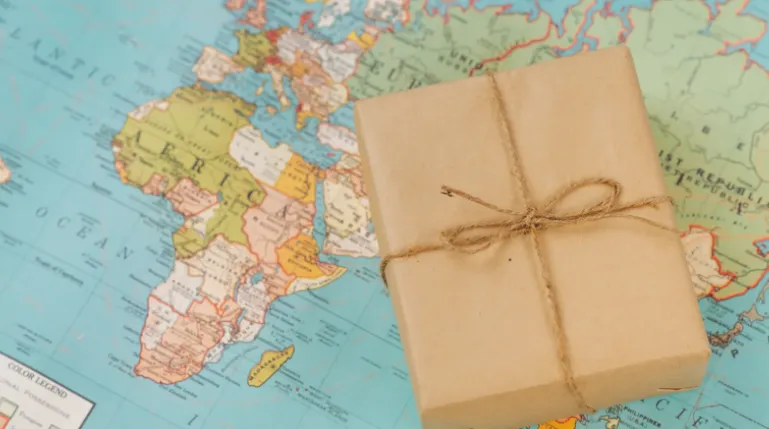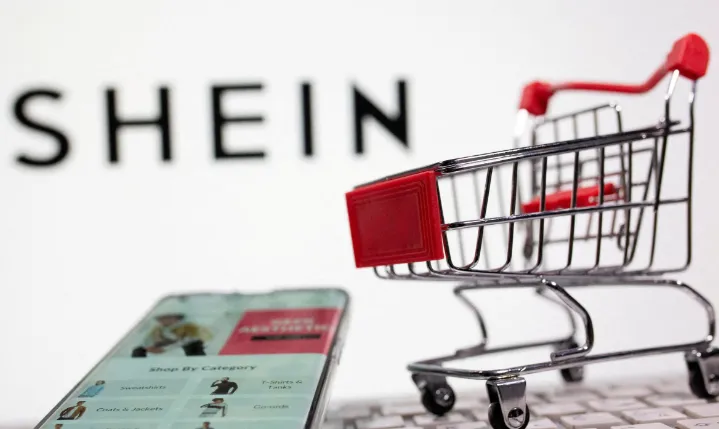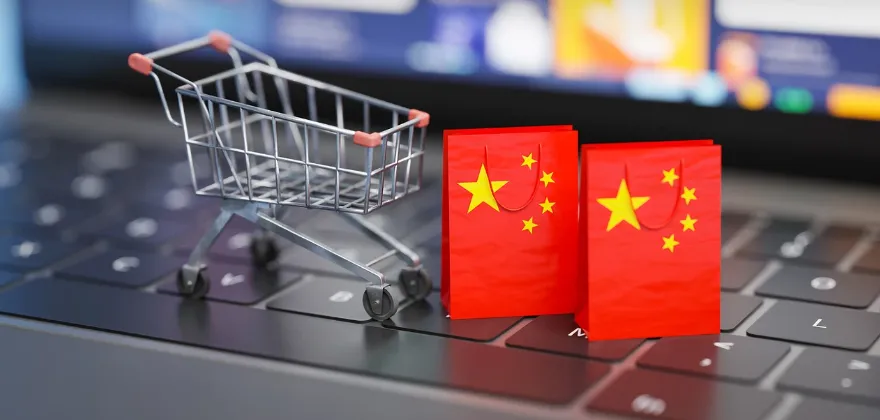The cheapest way to buy goods from China: 5 professional tips to save up to 70%

Let's be blunt: sourcing products from China is only half the battle. The real make-or-break factor for your profit margins is how you get those goods to your warehouse or customers. Everyone wants the cheapest option, but the "cheapest" is a moving target. It’s a complex equation of weight, volume, time, and a dozen hidden variables that can sink your budget if you’re not careful.
As a procurement professional, you don't just need a list of options; you need a strategic framework for decision-making. This guide cuts through the noise. We won't just tell you that sea freight is cheap; we'll show you exactly when it makes sense and how to avoid the fees that erase its savings. This is the playbook we use for our clients to reduce their landed costs consistently.

You're here for a quick answer. Use this matrix based on your shipment profile. This is your starting point.
For large, heavy shipments (> 500 kg / 2 CBM) with no urgency: Sea Freight (LCL/FCL). This is almost always the winner on cost per unit. Your timeline is 30-50 days.
For medium shipments (50 kg - 500 kg) that are time-sensitive: Air Freight Consolidation. You're paying for speed but leveraging groupage to slash costs. Expect 7-12 days.
For small, lightweight packages (< 2 kg) with flexible deadlines: E-Packet or China Post SAL. The undisputed champion for cost on small, low-value items. Timeline: 15-40 days (be prepared for variance).
For urgent, high-value shipments of any size: Express Couriers (DHL, FedEx, UPS). You are paying a massive premium for speed and door-to-door convenience. Get it in 2-5 days.
If your situation doesn't fit neatly into a box—and it often doesn't—read on. The devil is in the details, and the real savings are found there.
Quoting a price without context is meaningless. A 500 sea freight quote can be more expensive than a 1,200 air freight quote if you don't consider these four pillars.
This is the most misunderstood concept. Couriers and air freight carriers charge based on volumetric weight or actual weight—whichever is greater.
The Formula: (Length x Width x Height in cm) / 5000 = Volumetric Weight (kg).
The Reality Check: A large box of feather-light products can cost a fortune to ship by air. If your product is not dense, sea freight often becomes dramatically more economical, even for smaller shipments.
"10-day delivery" rarely means 10 days from factory to your door. It means 10 transit days. You must add:
Production Time: Are the goods ready ex-stock?
Origin Handling: Pickup, packaging, palletizing, and customs export clearance in China (2-3 days).
Destination Handling: Port/airport unloading, customs import clearance, potential inspections, trucking to final destination (3-7 days, longer if customs has questions).
A "30-day" sea shipment can easily become a 45-day journey from order placement to receipt.

Shipping to a major, efficient port like Los Angeles or Rotterdam is cheaper and faster than shipping to a secondary port with less frequent sailings and more congestion. Local port fees, terminal handling charges, and trucking rates vary wildly and must be factored into your total landed cost calculation.
Value: High-value items may justify the cost of faster, more secure express shipping to reduce insurance costs and capital tie-up.
Restrictions: Batteries, liquids, cosmetics, and branded goods face stricter regulations, requiring specific certifications, declarations, and shipping methods, which add cost and complexity.
Fragility & Perishability: Requires special packaging, handling, and faster transit, directly impacting cost.
Let's dissect each option with the nuance a serious importer deserves.
How It Really Works:
FCL (Full Container Load): You rent an entire 20' or 40' container. No sharing. Best for very high volume.
LCL (Less than Container Load): Your cargo shares container space with other shippers. You pay for the volume you use (per CBM). Best for most small- to mid-sized businesses.
The Real Cost Breakdown (2025 Estimates):
LCL from Shenzhen to LA: ~90−150 per CBM (1 CBM ≈ 1,000 kg).
FCL 20' from Shenzhen to LA: ~3,200−4,800 per container.
But wait, there's more: these are just the ocean freight costs. You must budget for:
Origin Charges: THC (Terminal Handling), Documentation, Customs Export Fee (~150−300)
Destination Charges: Customs Clearance, Duty & Tax, THC, Delivery Order, Pier Pass (~800−1,200+)
Insurance: ~0.3% of goods value (non-negotiable for serious importers).
When to Choose It: Your shipment is more than 2 CBM and not time-critical. You are prioritizing the absolute lowest cost per unit above all else.
The Professional's Tip: Never, ever accept a quote that isn't DDP (Delivered Duty Paid) unless you have your own customs broker. A DDP quote includes all fees upfront, preventing nasty surprises. For FCL, always get both DDP and FOB quotes to understand the cost breakdown.
How It Really Works: Your goods are flown to a destination airport. This is typically airport-to-airport. You are responsible for getting the goods to the origin airport and from the destination airport to your door, unless arranged otherwise.
The Real Cost Breakdown: Air freight is priced per kilogram.
Typical Rate: 4.50−8.00/kg from China to major US/EU hubs.
But wait, there's more:Similar to sea freight, add-ons:
Origin Handling: Airway Bill Fee, Security, Consolidation (~50−100)
Destination Charges: Customs Clearance, Duty & Tax, Airport Handling Fee (~200−500)
When to Choose It: Your shipment is 100 kg - 500 kg, has high value density, and you need it in weeks, not months.
The Professional's Tip: Consolidation is your best friend. A good freight forwarder will combine your shipment with others to fill a pallet or entire air container, granting you access to far better rates than you could get alone.

How It Really Works: A seamless, door-to-door service. They handle everything from picking up at your supplier's door to delivering to yours. The simplicity is the value.
The Real Cost Breakdown: Extremely high per-kg cost but minimal extra fees.
Typical Rate: 60−120 for a 5 kg box to the US.
The "All-In" Nature: The quote typically includes everything except duty and tax, which you will still be responsible for paying to the courier.
When to Choose It: For samples, urgent spare parts, or low-volume, high-margin goods where speed and simplicity justify the extreme cost.
The Professional's Tip: For express, the dimensional weight rule hits hardest. If you can make your box smaller, you can save significant money. Use their online calculators religiously before shipping.
How It Really Works: China Post's economical service for small packages, handed off to your local postal service (e.g., USPS, Royal Mail) for final delivery.
The Real Cost Breakdown: Very cheap, but with trade-offs.
Typical Rate: 15−30 for a 1 kg package.
The Trade-Off: Tracking is often unreliable once it leaves China. Delivery times are highly variable (15-40 days is common). Not suitable for anything valuable or urgent.
When to Choose It: You are shipping individual, low-value items directly to consumers (e-commerce), and cost is the only priority.
The Professional's Tip: Never use this for bulk commercial shipments. It's a logistical nightmare to track dozens of individual packages. This is for B2C, not B2B.
This is the advanced playbook. Implementing even one of these can save you thousands.
1. Master the Art of Consolidation: This is the number one cost-saver. Instead of shipping multiple small orders via air or express, have your supplier (or your agent) hold them and ship a single, consolidated LCL sea freight shipment monthly or quarterly. The savings on per-unit shipping will dwarf any minor additional holding costs.
2. Leverage a China-Based Fulfillment (3PL): For e-commerce, this is a game-changer. Ship all your bulk inventory in one go via sea freight to a 3PL warehouse in China. Then, as you make online sales, the 3PL fulfills individual orders internationally using heavily discounted bulk rates you could never access on your own. It turns expensive express parcels into economical bulk shipping.
3. Negotiate with Freight Forwarders as a Partner: Don't just get one quote. Get three. But don't just pit them on price alone. Explain your business and your projected annual volume. A good forwarder will want to grow with you and may offer better rates for the promise of consistent business. Ask: "What rate can you offer me if I guarantee you 10 shipments per year?"
4. Choose Your Incoterms Wisely - FOB is King: FOB (Free On Board) Shanghai is the gold standard for a reason. It gives you control. You pay your supplier up to the point the goods are loaded on the vessel. You then hire your own freight forwarder to handle the ocean/air freight and destination logistics. This allows you to shop for the best freight rates and choose your own customs broker, ensuring transparency and avoiding markup from your supplier's chosen agent.
5. Declare Smarter to Minimize Duty & Tax: Work with a licensed customs broker. The HS code they use to classify your product directly impacts the duty rate you pay. An experienced broker can often legally classify your products in a way that minimizes your duty liability. Never, ever under-declare the value to save on duty. This is illegal and will result in severe penalties, seizure of your goods, and a black mark on your importer record.
Q: How do seasonal factors like Chinese New Year impact shipping schedules and costs from China?
A: During peak periods such as Chinese New Year (typically January-February), factories shut down, and shipping demand surges, leading to port congestion, limited container availability, and rate increases of 20-50%. Planning shipments well in advance or scheduling during off-peak months (e.g., March-May) can avoid delays and higher expenses.
Q: What should I know about shipping restricted items like batteries or cosmetics from China?
A: Restricted goods often require special handling, certifications (e.g., MSDS for chemicals, UN38.3 for batteries), and declarations, which add to paperwork, time, and cost. Airlines and carriers may impose surcharges or refuse shipment if not properly documented, so work with a forwarder experienced in these commodities.
Q: Is it feasible to ship directly from multiple Chinese suppliers to one destination cost-effectively?
A: Yes, but it requires consolidation. Instead of shipping separately, have all suppliers send goods to a consolidation warehouse in China (e.g., in Shenzhen), where they are combined into one shipment. This reduces per-unit costs through volume discounts and minimizes handling fees.
Q: How do freight forwarders differ from direct carrier services, and why might I prefer one?
A: Freight forwarders act as intermediaries, bundling shipments from multiple clients to negotiate better rates with carriers. They also handle logistics, documentation, and customs clearance, which simplifies the process for you. Direct carriers are better for simple, point-to-point shipments but may lack flexibility and cost savings for complex needs.
Q: What's the best way to manage returns or defective products from China without incurring high costs?
A: Negotiate a "return to origin" clause with your supplier upfront, but shipping back is often expensive. Alternatives include: disposing of defective goods locally (if permitted), having the supplier provide a credit or replacement shipment, or using a third-party inspection service in China to catch issues before shipping.
Q: How can packaging design influence my shipping expenses from China?
A: Packaging that reduces dimensional weight (e.g., using slim, efficient boxes) can lower costs, especially for air freight. Avoid oversized packaging—carriers charge based on volume. Also, sturdy packaging minimizes damage risks, reducing insurance claims and potential losses.
Q: Are there eco-friendly shipping options from China, and do they cost more?
A: Some carriers offer green initiatives, such as carbon-offset programs or slower sea routes with lower emissions. These options may have a slight premium (5-10% higher) but can enhance your brand image and appeal to sustainability-minded customers.
Q: What payment terms are common in Chinese shipping contracts, and how do they affect my cash flow?
A: Terms like FOB (Free On Board) place responsibility on you for shipping costs once goods are loaded, while CIF (Cost, Insurance, Freight) includes more services but at a higher upfront cost. Negotiating terms that align with your cash flow—e.g., partial payments tied to shipment milestones—can improve financial flexibility.
Q: How do changes in trade policies or tariffs (e.g., US-China trade tensions) affect my shipping strategy?
A: Sudden tariff hikes can make Chinese goods less competitive. To adapt, consider diversifying sourcing to other countries, using tariff classification optimization (e.g., adjusting HS codes legally), or shipping via countries with favorable trade agreements to reduce duties.
Q: What role does Minimum Order Quantity (MOQ) play in shipping economics?
A: Higher MOQs typically lower per-unit shipping costs due to economies of scale (e.g., filling a container more efficiently). However, they require more capital and storage. Balance MOQ with demand forecasts to avoid overstocking or underutilizing shipping capacity.
Q: How can I ensure the security of high-value goods during transit from China?
A: Opt for carriers with track-and-trace technologies, use tamper-proof seals, and purchase all-risk insurance. Also, avoid disclosing shipment details publicly and work with suppliers who have secure packaging and loading processes to prevent theft.
Q: What are the lead time considerations for sourcing and shipping from China that aren't often discussed?
A: Beyond transit time, factor in production lead times (2-4 weeks for manufacturing), sample approvals, and customs clearance variability (e.g., additional inspections can add 1-2 weeks). Building a buffer of 10-15 days into your timeline helps avoid stockouts.
The cheapest way to get goods from China isn't a singular method; it's a strategy. It's the method that delivers the optimal balance of cost, speed, and reliability for your specific business needs at this specific moment.
For 90% of growing businesses, the "smartest" strategy involves consolidating orders and moving to LCL sea freight under FOB terms, partnered with a transparent freight forwarder you trust.
This complexity is exactly why companies hire procurement agents. We don't just find the product; we engineer the most cost-effective and reliable supply chain to get it to you.
Contact us
Call Us: +86 193 7668 8822
Email:[email protected]
Add: Building B, No.2, He Er Er Road, Dawangshan Community, Shajing Street, Bao'an District, Shenzhen, China